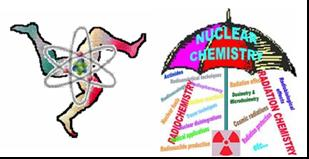Speaker
Prof.
Dominic Lariviere
(Université Laval)
Description
Micro-wave acid dissolution is an effective and commonly used technique to dissolve environmental samples. However, this technique has several issues, including its low sample throughput, its limited ability to deal with samples containing high organic content such as biological tissues, and its incomplete digestion yields for refractory compounds like actinides oxides.
An improved methodology based on the dissolution by automated fusion followed by extraction chromatography for the detection and quantification of actinides in environmental samples has been developed. A fusion protocol for the complete ashing and dissolution of various samples was optimized. Cross-contamination between samples was studied and results shown no evidence of such process even without washing the crucibles between samples. The automated fusion unit also improved repeatability in sample preparation over conventional muffle furnace fusion. Instrumental issues originating from the presence of high lithium concentration in the digestate after lithium metaborate fusion were also investigated. Consequently, a method using extraction chromatography (EXC) has been developed to remove lithium and the environmental matrix while keeping all the actinides in solution. The overall method was tested on several environmental reference materials of different composition. This methodology was applied to the monitoring of uranium airborne particulate in the province of Québec. Results obtained from microwave digestion and automated fusion were compared with respect to precision, detection and rapidity.
Author
Prof.
Dominic Lariviere
(Université Laval)
Co-author
Mr
Alex Milliard
(Corporation Scientifique Claisse)
